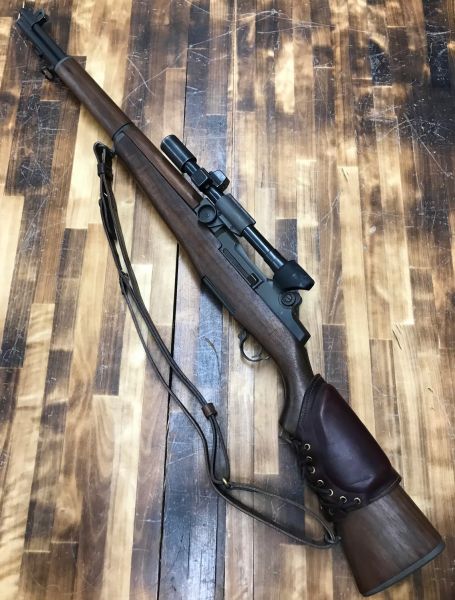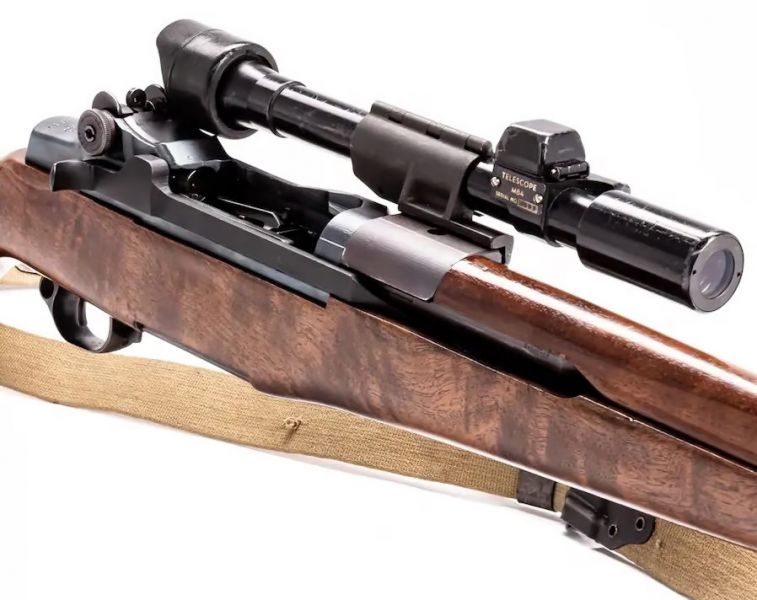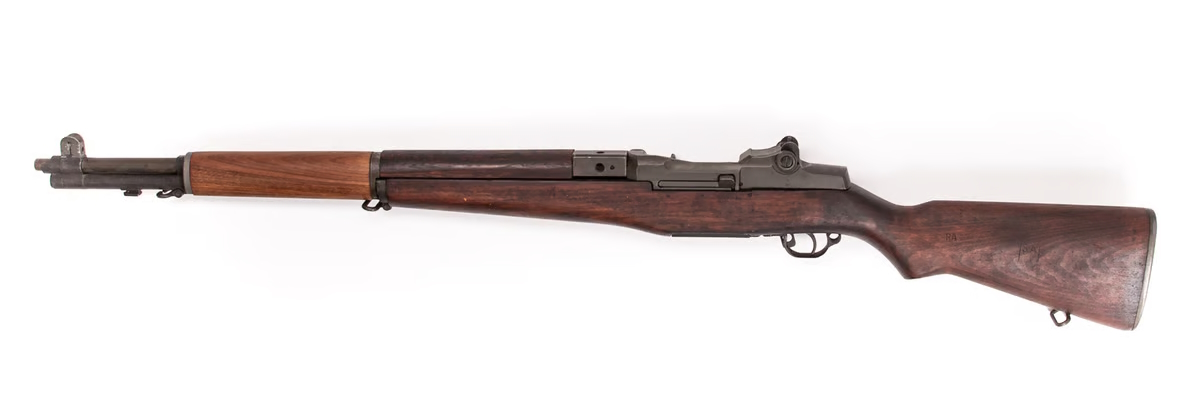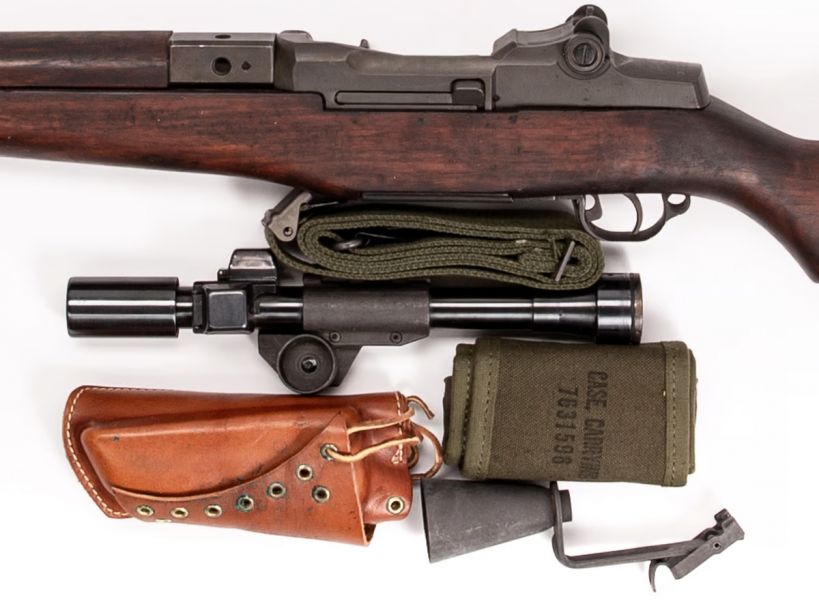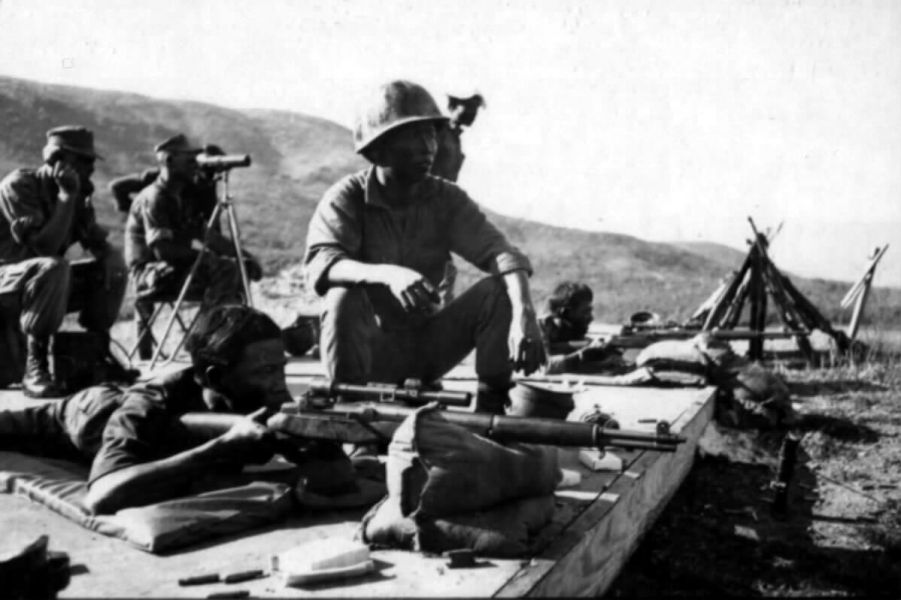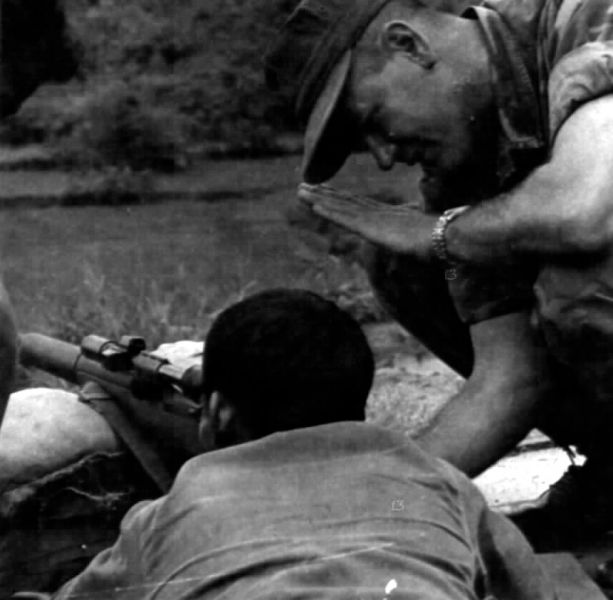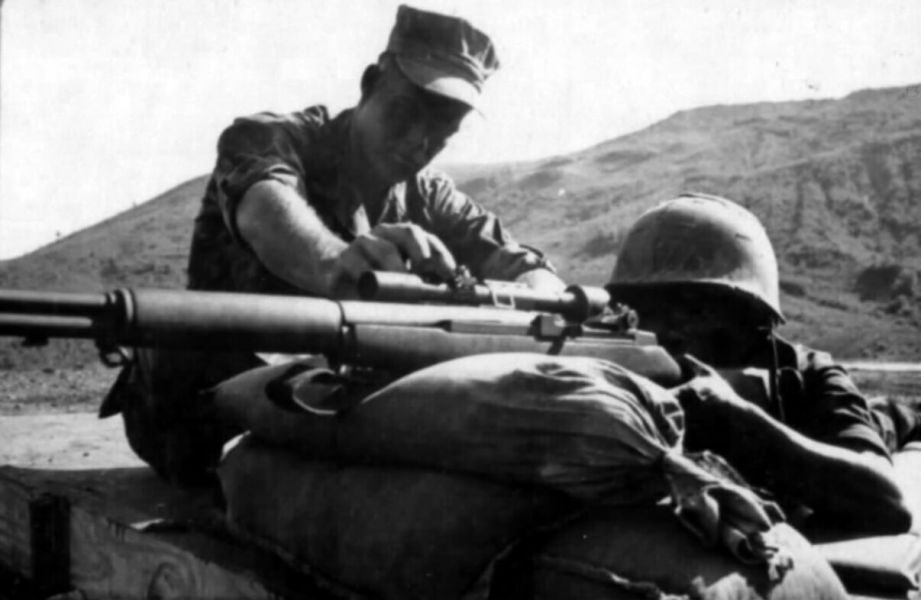M1D Garand
| Factions | Weapon | Icon | Classes | Ammo |
|---|---|---|---|---|
 US |
 M1D Garand |
 |
8 / 40 |
| Damage Base | Headshot × | Chest × | Stomach × | Leg × | Arm × | Bayonet | Rifle Grenades | Reload Speed |
|---|---|---|---|---|---|---|---|---|
| 55 | ×2.45 = 134.75 | ×1.2 = 66 | ×1.15 = 63.25 | ×0.8 = 44 | ×0.7 = 38.5 | YES | NO | 3.33 Seconds |
| Designation | Weapon Type | Fire Modes | Fire Rate | Bullet Spread ° | Range Modifier | Muzzle Velocity | Projectile weight | Weight |
|---|---|---|---|---|---|---|---|---|
| M1D | Sniper Rifles | Semi | 50 RPM | 8.15° & 0.25° ADS | 0.975 | 853 m/s | 10 g (154.3 gr) | 4.31 kg (9.5 lbs) |
| Full name | Caliber | Place of Origin | Date | Manufacturer | Barrel Length | Total Length | Weapon Script Name |
|---|---|---|---|---|---|---|---|
| U.S. Rifle, Caliber .30, M1D | 7.62x63 | USA | 1944 | Springfield Armory Winchester Harrington & Richardson Many Other |
24 in (609.6 mm) | 43.5 in (1,100 mm) | weapon_m1gs |
The M1D Garand sniper rifle is a modified version of the M1 Garand, designed for long-range precision shooting. It features an offset scope mount, commonly fitted with an M84 telescopic sight, allowing the use of both the scope and iron sights. The rifle retains the semi-automatic action and .30-06 Springfield chambering of the standard M1 Garand but includes a slightly heavier barrel for improved accuracy and sometimes a flash suppressor. Used primarily during the Korean War and early Vietnam War, the M1D was valued for its reliability and enhanced medium-range accuracy.
HISTORY
Initially, the M1 Rifle faced skepticism from Army NCOs who doubted its accuracy compared to the M1903 Springfield and feared its semi-auto action would waste ammunition. However, the M1 proved accurate and reliable, performing well up to 500 yards without a telescopic sight.
Efforts to adapt the M1 for sniping encountered challenges due to its top-loading, top-ejecting action. A prismatic scope with an offset tube was tested but proved ineffective. Ultimately, a left-mounted scope was chosen, using a Griffin & Howe base. The Lyman “Alaskan” telescope (M81 with a cross-hair reticle and M82 with a tapered-post reticle) was selected.
In June 1944, the M1E7 was standardized as the M1C. Production began later that year, with fewer than 8,000 units made by war's end. Despite its limited wartime use, it saw action in the Korean War, notably by Marine Staff Sergeant John E. Boitnott, who recorded nine kills in a counter-sniper role.
Post-WWII, the Marine Corps continued using M1C rifles, making modifications such as adopting a Kollmorgen 4x scope and a larger Griffin & Howe mount, leading to the designation "USMC 1952" or "MC 52."
The M1D, adopted as a substitute standard in September 1944, featured improved telescopic sights (the 2.2X M84 scope) and could be created by modifying standard M1 rifles. Although superior to the M1C, the M1D saw limited combat, serving in Lebanon (1958), the Dominican Republic (1965), and early Vietnam.
South Vietnam received 220,300 M1 and 520 M1C/M1D rifles from the U.S. government in 1950–1975.
SOURCE
-
M1D naked
-
ARVN scout-sniper training with the M1D during 1969.
-
A U.S. Marine works with a South Vietnamese Popular Force recruit and his M1D rifle.
-
A USMC instructor shows an ARVN soldier how to operate the M1D rifle at the Dai La Pass range in November 1969.

